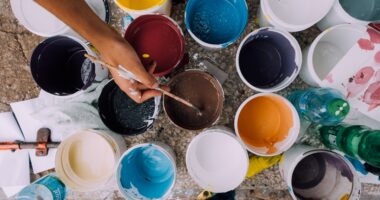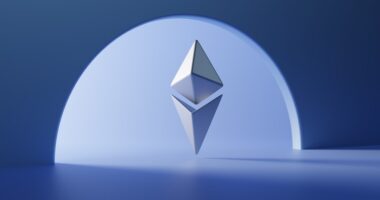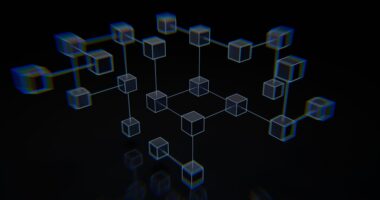The emergence of Non-Fungible Tokens (NFTs) has significantly transformed the art industry, particularly in the digital art sector. NFTs are distinct digital assets that serve as proof of ownership or authenticity for specific items or content, including artwork, videos, and music. Unlike fungible cryptocurrencies such as Bitcoin or Ethereum, NFTs are not interchangeable and possess individual values.
This uniqueness has made NFTs highly sought after in the art world, enabling digital artists to market their creations in unprecedented ways. NFTs have had a substantial impact on digital art by providing artists with new monetization opportunities. Previously, digital artists faced challenges in selling their work and protecting it from unauthorized copying or theft.
NFTs have addressed these issues by allowing artists to create unique tokens for their digital artwork, establishing irrefutable ownership proof and introducing a novel method for buying and selling digital art. This innovation has expanded opportunities for digital artists, enabling them to exhibit and sell their creations to a global audience with enhanced ease and security.
Key Takeaways
- NFTs are revolutionizing the art world by providing a new way to buy, sell, and showcase digital artworks, creating a significant impact on the traditional art market.
- Crafting NFT images involves creating unique digital artworks, tokenizing them on blockchain platforms, and showcasing them on NFT marketplaces for potential buyers.
- NFT platforms and marketplaces like OpenSea, Rarible, and Foundation provide artists with the opportunity to buy, sell, and showcase their NFT art to a global audience.
- Ethereum (ETH) and Bitcoin (BTC) play a crucial role in the NFT art market as they are the primary cryptocurrencies used for buying, selling, and trading digital art NFTs.
- NFT art collecting involves investing in digital art NFTs, storing them securely in digital wallets, and displaying them in virtual galleries or on digital screens.
Crafting NFT Images: Exploring the Process of Creating and Showcasing Digital Artworks
Creating the Digital Artwork
Crafting NFT images begins with the creation of the digital artwork itself. Digital artists use various tools and software to create their art, whether it’s digital painting, 3D modeling, or any other form of digital expression.
Minting the NFT
Once the artwork is complete, the artist can then proceed to minting an NFT for their creation. Minting an NFT involves creating a unique token on a blockchain, such as Ethereum, that represents ownership of the digital artwork. This process typically incurs a gas fee, which is a transaction cost on the blockchain.
Showcasing and Selling the NFT
After minting the NFT, the artist can then showcase and sell their digital artwork on various NFT marketplaces and platforms. These platforms provide a space for artists to display and sell their NFT art to collectors and enthusiasts. The process of showcasing digital artworks on these platforms often involves creating a profile, uploading the artwork, setting a price, and providing information about the piece. Once listed, collectors can then purchase the NFT and become the rightful owner of the digital artwork.
A New Era for Digital Art
This process has transformed the way digital art is created, showcased, and sold, providing new opportunities for artists to monetize their work in the digital realm.
NFT Platforms and Marketplaces: Where to Buy, Sell, and Showcase NFT Art

NFT platforms and marketplaces have become essential hubs for buying, selling, and showcasing NFT art. These platforms provide a space for artists to display their digital artworks and for collectors to browse and purchase unique pieces. Some of the most popular NFT marketplaces include OpenSea, Rarible, Foundation, and SuperRare, each offering a unique set of features and opportunities for artists and collectors alike.
These platforms typically allow artists to create a profile, upload their digital artworks, set a price in cryptocurrency, and list their pieces for sale. Collectors can then browse through the available artworks, place bids or make purchases, and add the NFTs to their digital collection. The rise of these NFT platforms has created a thriving marketplace for digital art, allowing artists to reach a global audience and collectors to discover and invest in unique pieces of digital art.
The Role of Ethereum (ETH) and Bitcoin (BTC) in the NFT Art Market
| Metrics | Ethereum (ETH) | Bitcoin (BTC) |
|---|---|---|
| Market Dominance | Majority of NFT transactions are conducted using ETH | Minimal presence in NFT art market |
| Transaction Speed | Relatively fast confirmation times | Slower confirmation times |
| Gas Fees | Can be high during periods of network congestion | Lower fees compared to ETH |
| Integration with NFT Platforms | Widely integrated with NFT marketplaces and platforms | Limited integration with NFT platforms |
| Market Value | Second largest cryptocurrency by market cap | Largest cryptocurrency by market cap |
Ethereum (ETH) and Bitcoin (BTC) play a significant role in the NFT art market as they are the primary cryptocurrencies used for buying, selling, and trading NFTs. Ethereum, in particular, has become the leading blockchain for minting NFTs due to its smart contract functionality, which allows for the creation of unique tokens representing digital assets. Artists typically list their NFTs for sale in Ether (ETH), the native cryptocurrency of the Ethereum blockchain.
Bitcoin (BTC) also plays a role in the NFT art market, as some platforms and marketplaces accept Bitcoin as a form of payment for purchasing NFTs. While Ethereum is more commonly associated with NFTs due to its smart contract capabilities, Bitcoin’s widespread adoption and recognition as a store of value have made it an attractive option for collectors looking to invest in digital art. The use of these cryptocurrencies in the NFT art market has created new opportunities for artists and collectors to engage in a decentralized and borderless marketplace for digital art.
As the popularity of NFTs continues to grow, Ethereum and Bitcoin are likely to remain integral to the buying, selling, and trading of NFT art.
NFT Art Collecting: How to Invest in and Display Digital Art NFTs
NFT art collecting has become a popular way for art enthusiasts and collectors to invest in digital art. Collectors can browse through various NFT marketplaces to discover unique pieces of digital art created by talented artists from around the world. When considering an NFT art purchase, collectors should take into account factors such as the artist’s reputation, the rarity of the artwork, and its potential for appreciation in value over time.
Once an NFT artwork is purchased, collectors can display their digital art collection in various ways. Some collectors showcase their NFT art in virtual galleries or display it on digital screens in their homes or offices. Additionally, some NFT marketplaces offer built-in features that allow collectors to create virtual exhibitions of their collections for others to view and appreciate.
The ability to invest in and display digital art NFTs has opened up new possibilities for art enthusiasts to engage with and support digital artists while building valuable collections of unique digital artworks.
NFT Art Authentication and Ownership: Ensuring the Legitimacy of Digital Artworks

Challenges of Traditional Digital Art
Traditional digital art faces a significant challenge in proving ownership and authenticity. The ease with which digital files can be duplicated and shared makes it difficult to verify the original creator and owner of a digital artwork.
The Solution: NFTs on Blockchain
NFTs offer a solution to this problem by allowing artists to create a unique token on a blockchain. This token serves as irrefutable proof of ownership for their digital artworks, providing a secure and transparent way to establish ownership.
Benefits for Artists and Collectors
The use of NFTs not only protects artists from unauthorized duplication of their work but also gives collectors confidence in the authenticity of the digital art they purchase. The blockchain technology underlying NFTs ensures that each token is unique and cannot be replicated or tampered with, providing a secure and transparent way to establish ownership of digital artworks.
The Future of NFT Art: Trends and Innovations in the Digital Art World
The future of NFT art is filled with exciting trends and innovations that are set to further transform the digital art world. One trend that is gaining traction is the integration of virtual reality (VR) and augmented reality (AR) technologies with NFT art. This allows collectors to experience and interact with digital artworks in immersive virtual environments, creating new possibilities for how art is showcased and experienced.
Another emerging trend is the use of blockchain technology to enable fractional ownership of NFT art. This concept allows multiple individuals to own shares of a single piece of digital art, making it more accessible for a broader range of collectors to invest in high-value artworks. Furthermore, as environmental concerns surrounding the energy consumption of blockchain networks continue to grow, there is an increasing focus on developing more sustainable solutions for minting and trading NFTs.
Innovations in blockchain technology are being explored to reduce the carbon footprint associated with NFTs while maintaining the security and integrity of the underlying blockchain networks. In conclusion, the rise of NFTs has had a profound impact on the art world, particularly within the realm of digital art. Artists now have new opportunities to monetize their work through the creation and sale of NFTs, while collectors can invest in and display unique digital artworks in innovative ways.
As blockchain technology continues to evolve, so too will the trends and innovations within the NFT art market, shaping the future of digital art collecting and showcasing for years to come.
FAQs
What are NFT images?
NFT images are digital artworks that are tokenized on a blockchain, creating a unique, non-fungible token (NFT) that represents ownership and provenance of the artwork.
How do you create NFT images?
To create NFT images, artists can use digital art creation tools such as Adobe Photoshop, Procreate, or other graphic design software to produce their artwork. They can then mint the artwork as an NFT on a blockchain platform such as Ethereum or Tezos.
What is the process for showcasing NFT images?
NFT images can be showcased on various online platforms that support NFTs, such as OpenSea, Rarible, or Foundation. Artists can create a profile on these platforms, upload their NFT images, and list them for sale or auction.
What are the benefits of creating and showcasing NFT images?
Creating and showcasing NFT images allows artists to tokenize their digital artworks, providing a secure and transparent way to prove ownership and sell their art. NFTs also enable artists to receive royalties on secondary sales of their artwork.
Are there any copyright considerations when creating and showcasing NFT images?
Yes, artists should be aware of copyright considerations when creating and showcasing NFT images. It’s important to ensure that the artwork being tokenized and sold as an NFT does not infringe on any existing copyrights or intellectual property rights.





